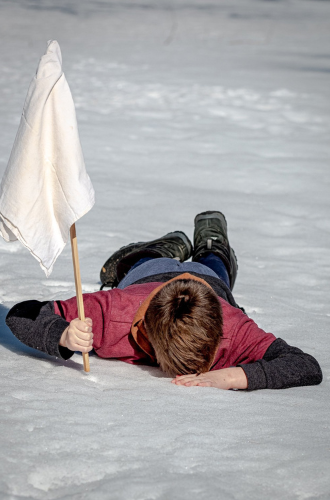2 Ways to Support a Traumatized Loved One - Part 2
2 minute read.
Supporting a Loved One With Trauma.
Picking up from last month’s first post about supporting a traumatized loved one. It mentioned trauma sensitive language, planning regulating activities, and reserving judgment. The series continues below - Happy Learning!
1. Recognize Hyperarousal.
Hyperarousal is a common symptom of PTSD and trauma. When a traumatized person’s anxiety is heightened, it greatly affects their sensitivity to external (and internal*) stimuli. Loud noises, unexpected touch, suspicious smells, anything that affects the senses, can result in a more intense response from the individual.
Combat veterans and gun violence victims are known to have high stress around holidays like Independence Day and New Year’s Eve, as their brains expect fireworks to happen, causing their bodies to respond in an unpredictable way.
Victims of physical and sexual violence may feel threatened by fairly innocuous social interactions like hugs and handshakes, because their bodies have learned that touch can be harmful and unpredictable.
For the above reasons, traumatized people can be labeled “jumpy,” “too sensitive,” “overreacting,” “angry,” “skittish,” etc.
These labels can be hurtful, as they suggest that the traumatized individual is choosing to behave in this way, and gives them another reason to feel they are doing something “wrong”. Your loved ones will see and appreciate that you do not judge them for their behavior in these situations.
Note: Thankfully, hyperarousal and other PTSD symptoms can be treated with different medication regimens (including MDMA!), individual and group psychotherapy.
2. Recognize Hypoarousal.
Where Hyperarousal is an “over response” to stimuli, Hypoarousal can be considered an “under response.” When we discuss “fight or flight” responses, there is another option (several others in fact*) that is not often mentioned by the layperson - “freeze.”
When facing a stressful, potentially traumatizing or triggering situation, our nervous system elects one of several options in how it will respond. Hypoarousal can present as a person “shutting down” or “checking out.”
It can be observed in animals in cages or traps, and the more well known state of “playing dead” happens when an animal's system is able to shut down almost completely, mimicking death. In humans, hypoarousal can trigger dissociation and derealization, limiting the individual’s ability to process or even remember the traumatizing situation.
Traumatized individuals can often experience this state of hypoarousal in response to a trigger as well as the trauma itself.
Statements like “Why didn’t you fight back,” “How could you not say anything,” or “I would have done differently” are not only harmful, but inherently nonsensical as it judges the body’s natural response to a threat, a decision the person did not make. Resisting any temptation to judge your loved one’s response to stress will be remembered and appreciated.
What To Remember About Trauma.
It is not uncommon for clients to feel shame over how they responded to a traumatizing event - sometimes years after - thinking they “should have done better”. It is important to understand that our selection of fight/flight/freeze has nothing to do with our strength (physical or emotional), our intellect or our or moral standing.
We have little to do with how our body responds to fear, and while it is natural to feel responsible, our responses are not always up to us.


